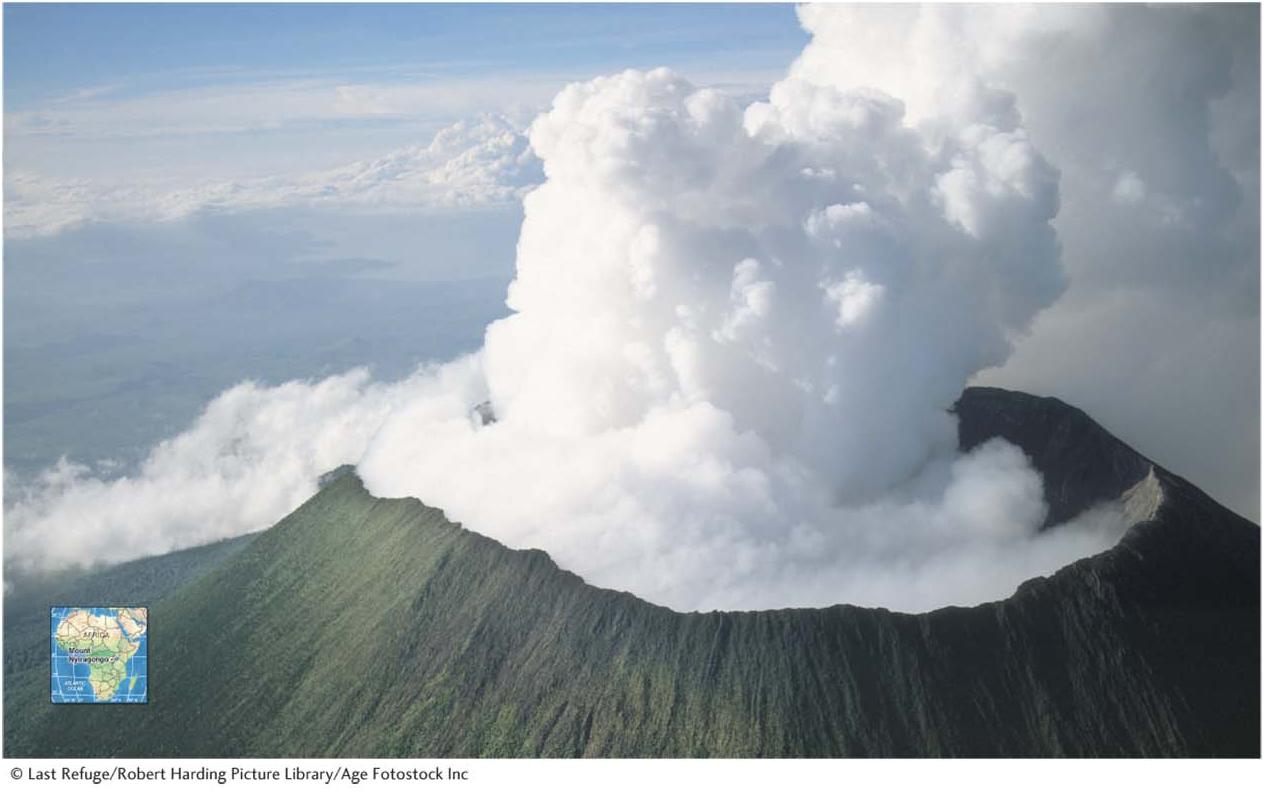GEOHAZARDS: Volcanoes and Earthquakes
14

LIVING PHYSICAL GEOGRAPHY
What is a tsunami?
Why do some volcanoes explode violently?
What causes earthquakes?
What was the “Year without a Summer”?
THE BIG PICTURE
Earth’s hot interior and its moving crust create volcanoes and earthquakes. These phenomena shape the surface of the crust and present hazards for people.
LEARNING GOALS
After reading this chapter, you will be able to:
14.1
Describe three main types of volcanoes and major landforms associated with each.
14.2
Explain the hazards volcanoes pose and which geographic areas are most at risk.
14.3
Explain what causes earthquakes.
14.4
Describe the types of seismic waves produced by earthquakes, how earthquakes are ranked, and what can be done to reduce our vulnerability to earthquakes.
14.5
Assess the potential links between large volcanic eruptions, Earth’s physical systems, and people.
THE HUMAN SPHERE:
Deadly Ocean Waves
tsunami
A large ocean wave triggered by an earthquake or other natural disturbance.
JUST BEFORE 8:00 A.M. ON DECEMBER 26, 2004, the seafloor off the coast of the island of Sumatra, in Indonesia, was thrust upward 5 m (16 ft) in a magnitude 9.1 earthquake. This earthquake was the third strongest in recorded history. The movement of the seafloor heaved an estimated 30 km3 (7.2 mi3) of seawater upward, creating a series of waves that radiated across the Indian Ocean. Such large ocean waves triggered by an earthquake or other natural disturbance of the ocean floor are called tsunamis.
Question 14.1
What is a tsunami?
A tsunami is a giant ocean wave triggered by a natural event, usually an earthquake. When these waves reach shallow coastal waters, they can grow to great heights and devastate coastal areas.
In the open ocean, the waves traveled at nearly the speed of a jetliner (800 km/h or 500 mph), but they went largely undetected because they had a wavelength (the distance between wave crests) of hundreds of kilometers. Thus, the thousands of boats in the Indian Ocean did not detect the waves as they passed underneath.
As the waves approached shallow water, however, the wavelengths decreased and the height of the waves grew up to 15 m (50 ft) high in some regions. Some coastal areas even experienced 30 m (100 ft) waves. The waves devastated coastal areas along the Indian Ocean, particularly in regions nearest the earthquake. Most of the city of Banda Aceh, on Sumatra (Figure 14.1), was destroyed.

In response to this catastrophe, the Indian Ocean Tsunami Warning System, similar to one already active in the Pacific Ocean, was developed and activated in June of 2006. Cell-
geohazard
A hazard posed to people by the physical Earth.
This chapter focuses on geologic hazards, or geohazards: hazards presented to people by the physical Earth. Examples of geohazards include volcanic eruptions, earthquakes, and tsunamis. We first examine volcano types as well as the behavior of volcanoes and the hazards they present. We next explore earthquakes and the danqers they pose for people. Finally, we take a look at the qlobal reach of larqe volcanic eruptions and their effects on human societies.
